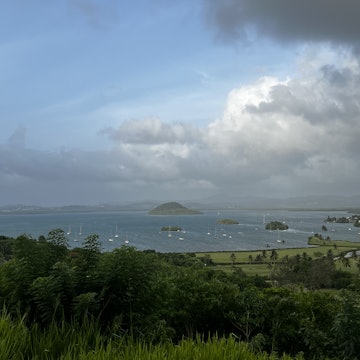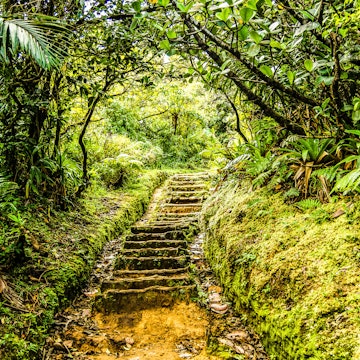
From verdant rainforests to beachey towns: the 7 best hikes in St Lucia

Sep 4, 2021 • 8 min read

With its lush tropical landscape, St Lucia is often considered one of the most beautiful islands in the Caribbean © Jens Karlsson / Getty Images
The unspoiled, natural beauty of St Lucia offers ample opportunity for hiking excursions. The Helen of the West is a volcanic island, with a mountainous southern region, an abundance of waterfalls and verdant rainforests to traverse.
Here’s a look at some of the best hikes in St Lucia.
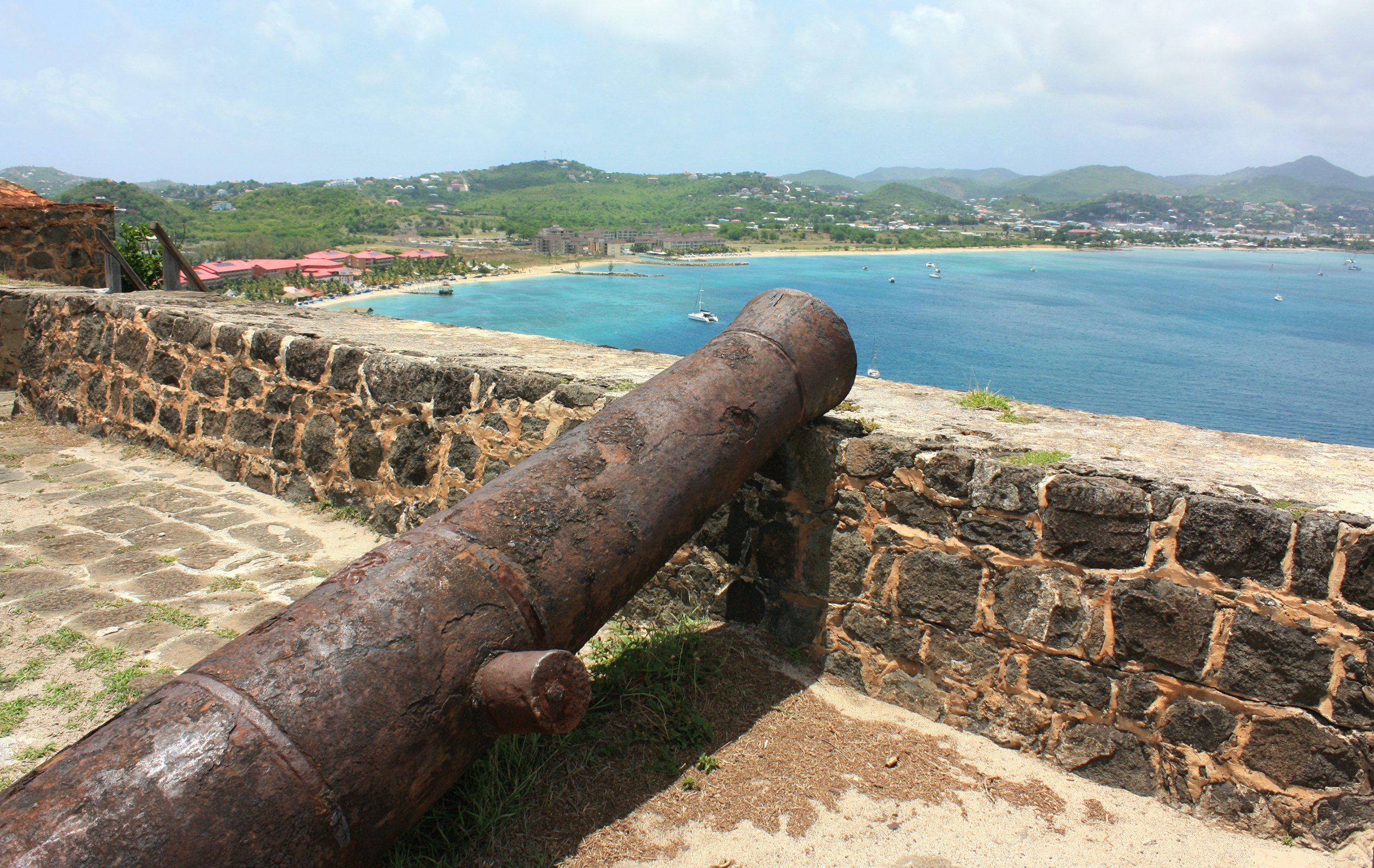
Pigeon Island National Park
Best hike for history lovers
1.3 miles (2.1km) round trip, 2 hours, moderate
Pigeon Island, used to be an isolated island off the shores of St Lucia’s mainland until a causeway was constructed to link the two in 1972. A strategic outpost, as the British and French battled for control of the island, this is one of the most important landmarks in St Lucian history.
Between 1779 to 1782, Admiral George Rodney occupied this area to keep his eye trained on the French naval base in nearby French territory Martinique.
The National Park is sprawled across 44 acres of land at the northern tip of the island. It’s easily accessible by bus or taxi and there’s adequate parking outside if traveling by rental car. Once inside, the trail is well marked and it’s an easy walk on a stone path that eventually leads to some steps to the first lookout point. The stairs are flanked by a wooden railing for extra support.
Keep climbing to reach Fort Rodney (225ft). Besides the breathtaking 360-degree view of the northwest coastline, you will also find the remains of the military fort, a cannon and a powder room. It’s a simple hike that can be managed without a guide but one would be useful to truly dive into the fort’s history.
Signal Hill (330 ft) is the higher of the two peaks and a more difficult climb meant for the more seasoned hiker. The large rocks and loose gravel littering the trail adds to the challenge but you will be richly rewarded with stunning views.
You might even see Martinique on a clear day. If you’re not up for the trek, head back down to the park and sprawl out on the well-manicured lawn or cool off at one of two white-sand beaches on the premises. History buffs will want to visit the ruins and other relics from the colonial wars including an officers’ kitchen and soldiers’ barracks.

Mount Pimard
Best hike for families
1.7 miles (2.7km) round trip, 2 hours, moderate
Mount Pimard is nestled in Rodney Bay, the epicenter of nightlife in St Lucia, and just steps from Reduit Beach aka “The Ramp”.
The Mount Pimard Trail is an out and back trail that starts off with a wide straight path that leads to Pebble Beach, where you’ll meet fishing enthusiasts. It’s an easy 10-minute walk and you might even run into Segway riders touring along the nature trail. Once you get past the beach to the official base, the intensity steadily increases during this 45-minute, nearly one-mile journey uphill that includes a fantastic vantage point for sunsets.
The final 20 minutes of the gravelly and sometimes muddy terrain are the most strenuous and require the assistance of readily available ropes to make the arduous climb. At the peak are sweeping views of Rodney Bay, Pigeon Island and even the famed Pitons.
Along the way are bunkers used to store food items and equipment when the American military was stationed on the island during World War II, an abandoned gazebo and the Stone Face Fish Pond where you can feed fresh-water fish.
On a beautiful day, visitors can also get an unfettered view of Mount Gimie, which at 3117 ft. is the tallest mountain in St Lucia. The close proximity to Rodney Bay means that families can enjoy a meal at one of several nearby establishments or hit the beach post-hike.

Piton Flore Trail
Best hike to see wildlife
1.8 miles (2.9km) round trip, 2 hours, moderate
The Piton Flore Trail is a loop that takes you into St Lucia’s rainforest, from the Forestiere community in South-East Castries. The trailhead starts off with approximately 600 man-made steps taking you to the Old French Road before a right turn takes you to the steep slope of Piton Flore.
This can quickly turn into a slippery slog if wet but manageable if dry. The humidity of the rainforest means a naturally soggy underfoot, plastered in leaves. A good pair of hiking boots is essential to finding your footing.
This hike is a great opportunity to catch a glimpse of the vibrant St Lucia parrot (Amazona Versicolor), which is only found on the island and is an endangered species.
Be on the lookout also for exotic plants, mongooses and snakes. The boa constrictor is non-poisonous and non-aggressive but avoid the poisonous and aggressive fer-de-lance (Tête Chien). A guide from the Forestry Department is highly recommended both for safety and their vast knowledge of the flora, fauna and wildlife in the area.
Tet Paul Nature Trail
Best easy hike
0.62 miles (1 km) round trip, 45 mins to 1 hour, easy
The circular Tet Paul Nature Trail in Soufrière is perfect for all ages and fitness levels. A leisurely walk up a winding staircase provides spectacular views of the Pitons and the wide expanse of the southernmost Vieux-Fort town without a four-hour climb.
Depending on the time of year, you might be able to sample some of the local fruits in season like guava, avocado and soursop. As you hike through the nature reserve you’ll also encounter traditional medicinal plants.

Gros Piton Nature Trail
Best hike for the adventurous
2.9 miles (4.7km) round trip, 4-6 hours, hard
Measuring 2619 ft-high (786 m), Gros Piton is the taller of the much-lauded twin peaks in St Lucia. The trailhead is accessed through the community of Fond Gens Libre, meaning “valley of the free people.”
The trail cuts through the heavily shaded rainforest and is dominated by large boulders and steps organically fashioned from tree roots. While the canopy of trees protects you from direct sunlight, it also makes for a humid, muggy trek. Hydration will be key to successfully completing the climb, which is sectioned off into four quarters, each ending with a rest spot and fantastic scenery.
The first is the least taxing and ends with a snapshot of the Choiseul Village coastline. The level of difficulty increases from the second quarter with a quick rise in elevation but provides glimpses of Petit Piton and a 200-year old mango tree at the 3/4 mark.
The second half is a grueling scramble as you clutch onto high rocks on the practically vertical path, but there are wooden rails and handholds to cling to. There are technically two peaks.
The south summit view covers the entire southern landscape and ocean. A further 10-minute walk off to the side takes you to the north summit and a stunning, unobstructed view of Petit Piton.
As magnificent as the views are, the real highlight of a Gros- Piton hike is the locally made ice cream and ice-lollies at a tiny shop tucked away near the foot of the peak.
The uneven and slippery terrain makes the descent harder than the ascent and is tough on the joints. A hiking stick is advisable. Hiking Gros Piton without a guide is definitely not recommended and should not be attempted on a rainy day or shortly after rainfall. Start as early as possible to avoid high midday temps.
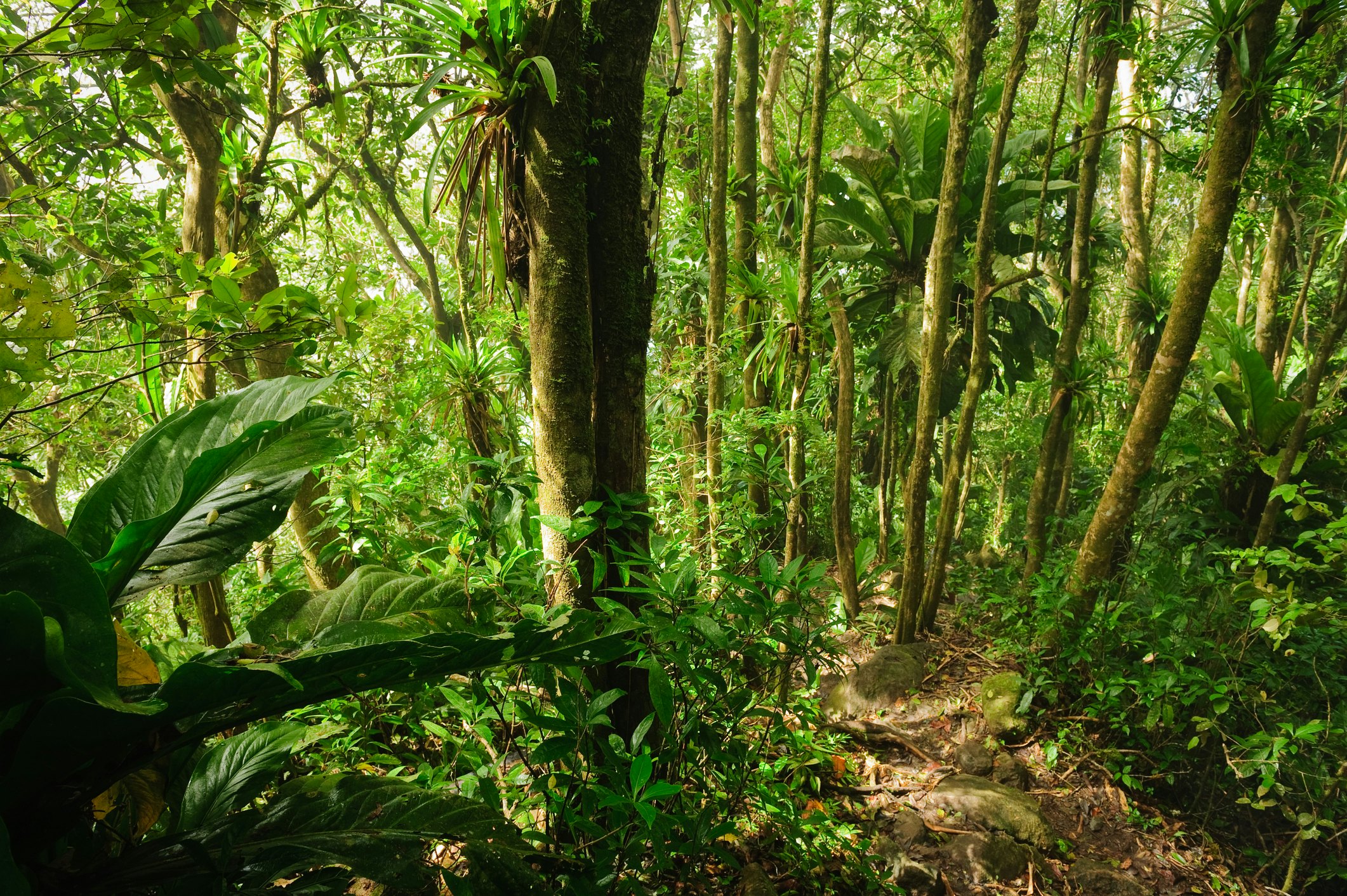
Petit Piton Trail
Best hike for the views
0.99 miles (1.6km) round trip, 3-4 hours, hard
The shorter of the iconic twin peaks (2,461 ft/ 739 m) is also the more unforgiving. The trail starts out innocently enough with an ascent into the forest over some large rocks. But it goes from zero to 60 quickly as you start clutching at roots and stones to help maneuver the extremely precipitous climb.
The second half will test your upper body strength as it requires a lot of rope work to hoist yourself to the top. Light rock climbing shoes would be more appropriate here than bulky hiking boots. This is a trail best suited for a seasoned hiker and a journey that should always be made with a highly experienced guide.
However, the infinitely beautiful view from the small summit is easily the best in St. Lucia and makes it all worth the effort.
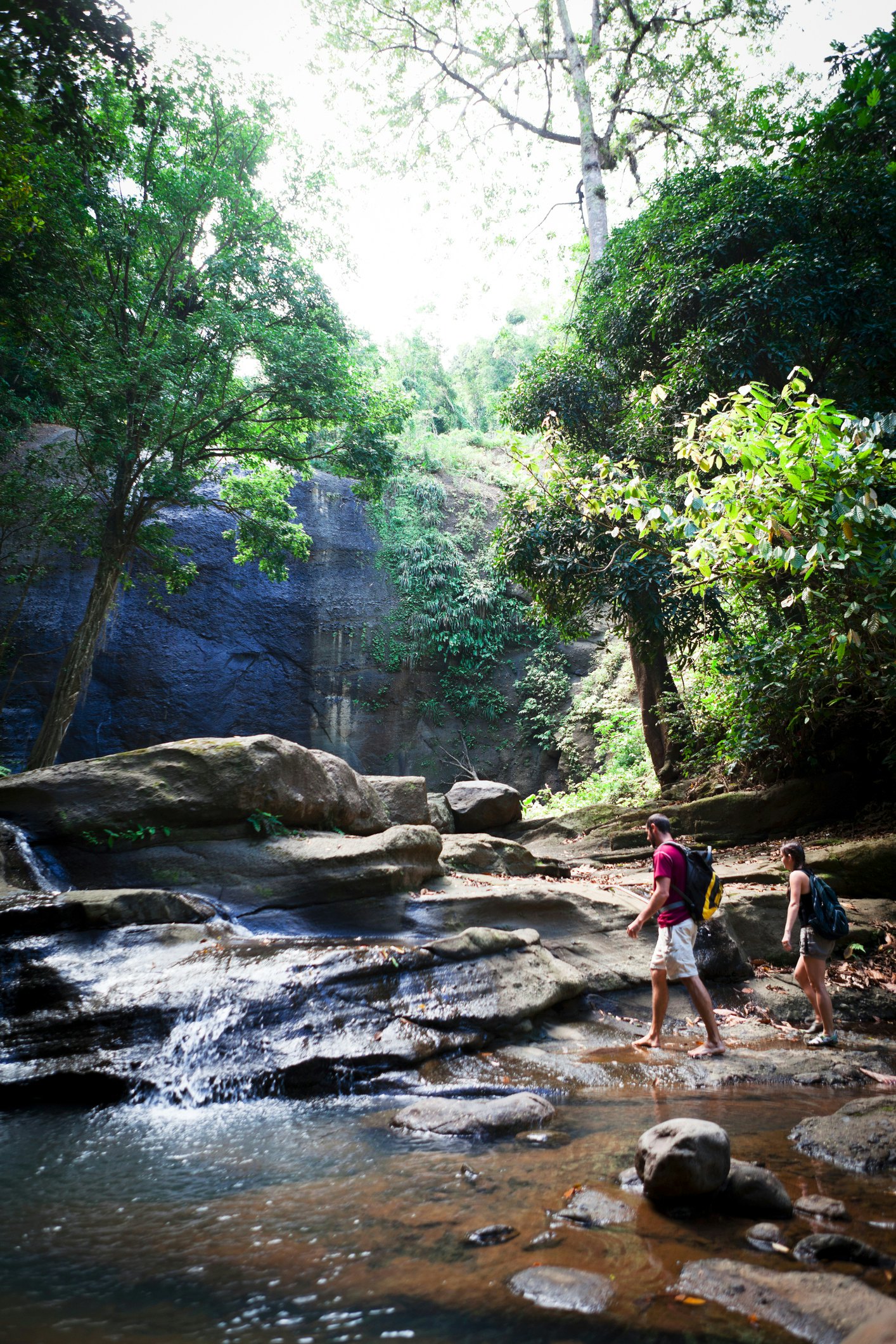
Belle Vue
Best hike for a hidden waterfall
2 miles (3.2km) round trip, 2-3 hours, hard
A quick search for waterfalls in St Lucia will yield the more popular spots like Toraille Waterfall, the Diamond Falls and LaTille Falls. But if you’re looking for an oasis unencumbered by throngs of tourists, head to the southern sanctuary of Belle Vue in Vieux-Fort.
Getting there will require a guide, patience, endurance and proper footwear, especially after rainfall. At times it may even feel like a parkour course as you navigate the downward slope of the muddy hills with a rope.
But after making your way through the thick brush the payoff is a cascading waterfall and plunge pool.
Tips for hiking in St Lucia
The sun tends to be scorching around midday so it’s best to plan your hikes, particularly long ones, for early in the day. Late afternoon will suffice for shorter treks.
Carry water and a light snack, especially if hiking with kids. Don’t forget your hat and sunscreen as well.
While some trails are manageable on your own, it is highly recommended to always enlist the services of an experienced guide, especially on more treacherous hikes. Steep, vertical climbs like Petit Piton are not sanctioned by the St. Lucia government and calls for a mandatory guide.
Most hiking trails are located in areas that charge a fee for entry.
The rainy season runs from June to November, so your best chance for dry weather is in the earlier months.
Consider carrying a change of clothes along for long, intense hikes where you may need to use your hands to navigate the terrain.
You might also like:
Pitons and beyond: St Luca’s top outdoor adventures
How to get off-the-beaten track in St Lucia
Top 10 experiences in St Lucia







